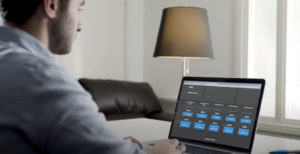If you’re looking to update your EWIS certification, or just get started, then you have come to the right place! In our new series of blogs, we are going to break down each course, one-by-one, so you can find out which courses you need.
EWIS, or Electrical Wiring Interconnection Systems, is a mandatory training course for all those working on aircraft maintenance and needs to be retaken every two years – so jot that down. The second thing you need to know is that EWIS is categorised into 8 groups, and the one you need depends on your role:
- Group 1 & 2: Avionics Engineers
To provide students with all the information required to satisfy the requirements of Annex III to ED Decision 2008/007/R of 29/08/2008 AMC20-22 and help improve wiring and maintenance practices throughout the industry. This course aims to provide acceptable means of compliance to comply with training obligations as required in paragraphs 21.A.145 and 21.A.245 of Part-21, 145.A.30 and 145.A.35 of Part-145 and M.A.706 of Part-M with respect to EWIS.

- Group 4 & 5: Mechanics/Interior Fitters/Sheet Metal Workers
Groups 4 and 5 have been merged to cover qualified staff performing general maintenance/inspections not involving wire maintenance (LRU change is not considered wire maintenance). They perform maintenance on aeroplanes that may require removal/reconnection of electrical connective devices (e.g. inspectors/technicians cat A or B1). The course also covers qualified staff performing other engineering or planning work on in-service aeroplanes and are personnel who are authorised to design mechanical/structure, systems installations, modifications and repairs, or personnel who are authorised to plan maintenance tasks. (SMW/Mechanics)
- Group 6: Other service staff (De-icing Staff, Push Back Crew, Cleaners etc)
EWIS Groups 6, 7 and 8 are aimed at other service staff with duties in proximity to EWIS.
TG 6: These staff members are personnel whose duties would bring them into contact/view of aeroplane wiring systems. This would include, but not be limited to Aeroplane cleaners, cargo loaders, re-fuelling staff, lavatory servicing personnel, de-icing personnel, push back personnel,
TG7: Flight Deck Crew (E.g. Pilots, Flight Engineers)
TG8: Cabin Crew.
- Group 7: Flight deck crew (Pilot/Co-pilot)
EWIS Groups 6, 7 and 8 are aimed at other service staff with duties in proximity to EWIS.
TG 6: These staff members are personnel whose duties would bring them into contact/view of aeroplane wiring systems. This would include, but not be limited to: Aeroplane cleaners, cargo loaders, re-fuelling staff, lavatory servicing personnel, de-icing personnel, push back personnel,
TG7: Flight Deck Crew (E.g. Pilots, Flight Engineers)
TG8: Cabin Crew.
- Group 8: Cabin Crew
EWIS Groups 6, 7 and 8 are aimed at other service staff with duties in proximity to EWIS.
TG 6: These staff members are personnel whose duties would bring them into contact/view of aeroplane wiring systems. This would include, but not be limited to: Aeroplane cleaners, cargo loaders, re-fuelling staff, lavatory servicing personnel, de-icing personnel, push back personnel,
TG7: Flight Deck Crew (E.g. Pilots, Flight Engineers)
TG8: Cabin Crew.
Now you’ve digested all the above information, it’s time to get started and buy your EWIS training course with Bostonair Technical Training.
All of our online training is available 24/7, 365 days a year so you can learn from wherever you are in the world, whenever you want. Our interactive online training courses take you through the required syllabus, using text, graphics, video, and diagrams, at a pace to suit you. Check out our blog on all of our online training courses available here.
For more information about our EWIS course, including benefits and more on what is included, click here.
Bostonair offer a number of online training courses under our EASA & CAA UK Part 147 accreditation. We can provide you with the following online aviation training courses, both initial and continuation:

